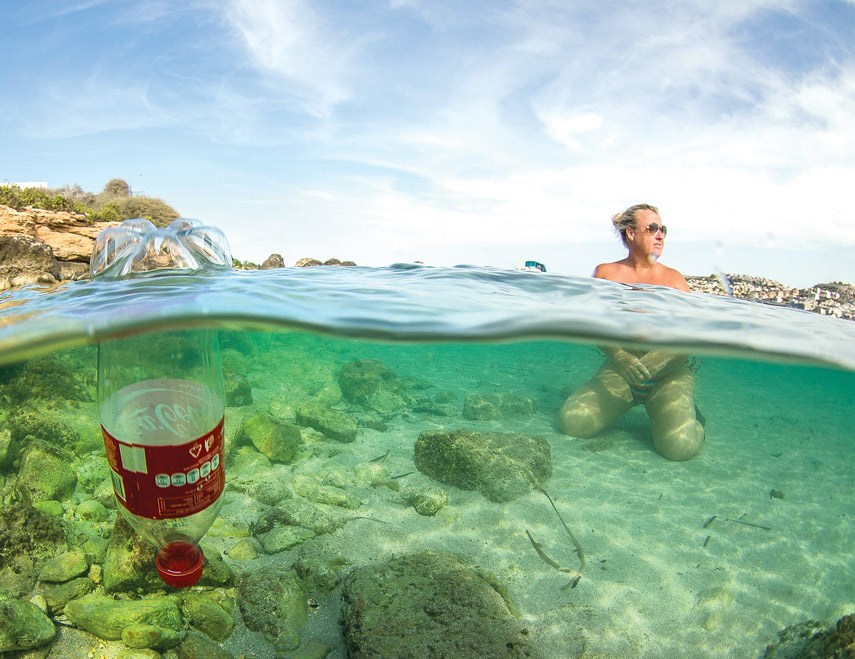A Plastic Ocean, Wednesday, June 28, 7 p.m., at the Kay Meek Centre in West Vancouver. Free event by registration. The screening will be followed by a discussion and Q&A with experts Dr. Peter Ross of the Coastal Ocean Research Institute, Rachel Schoeler of the Great Canadian Shoreline Cleanup, and Emma Langson of Plastic Ocean Foundation Canada.
What happens when something that’s indestructible is treated disposably?
That’s the central drama at the heart of A Plastic Ocean, a documentary released to the general public earlier this year that examines the global impact of plastic on the world’s oceans.
In short, the film is crystal clear in its answer: a global environmental catastrophe awaits us if we continue to treat the ocean like a plastic dumping ground.
Shot over a period of four years in 20 different locations, A Plastic Ocean is the brainchild of global non-profit organization Plastic Oceans Foundation.
The foundation’s goal is to engage with people around the world and make them understand the dangers in continuing to perceive of plastic as disposable.
Its strategy to get this message across is through promoting education, business sustainability and science.
Its delivery method is the film itself.
“We’re trying to make this as available as we can,” says Emma Langson, executive director for Plastic Oceans Foundation’s Canada branch. “You don’t want to preach to the choir. It’s everyone else that you need to get to.”
Jo Ruxton formed the foundation in the U.K. almost 10 years ago.
Ruxton, a former BBC producer integral in putting together acclaimed series such as The Blue Planet and Planet Earth, was passionate about making this film, though at the time she didn’t expect it to become such a massive, multi-year project.
That thinking soon changed.
“She had heard about this Great Pacific garbage patch,” Langson says. “She had heard through years of working that there was a lot of things going wrong and she wanted to investigate it.”
But when Ruxton, alongside director/journalist Craig Leeson and other crew, got to this so-called Pacific garbage patch the towering inferno of waste and plastic they were expecting was nowhere in sight – sort of.
As the film depicts, a small sample taken from the Pacific gyre – a system of circulating ocean currents – the crew was examining revealed something even more menacing than a large tower of waste: microplastic.
“You couldn’t see it on Google Earth, you couldn’t see it from space, so what was it? That’s where it became much more than what she had ever envisioned it would be,” Langson explains.
Microplastics are small bits of plastic particles that generally make up larger pieces. According to the film, when plastic – often in the form of plastic bottles – finds its way to the ocean, the combination of salt water and sunlight eventually breaks the pieces down into their microplastic components.
Microplastics are too small for the human eye to easily see, but are generally toxic and overtime can be absorbed by fish – who then are consumed by us.
Because of the strong ocean currents all over the world, a plastic bottle from the U.S. can end up in Australia or a piece of plastic from Vietnam can end up in Canada.
But because microplastics are near-impossible to see, it leads to an “out of sight, out of mind” mentality for people, Langson says.
“It’s not what we expect it to be and that’s the problem,” she says.
The film posits that of the over 300 million tonnes of plastic produced annually around the world approximately 8 million tonnes is dumped into the oceans.
“From a public perspective, it can be a bit overwhelming,” Langson says. “We can stop adding more in, and that comes down to behavioural change.”
The point of the film and the foundation, Langson says, is not to get people to become anti-plastic.
Instead, their mission is get people thinking about non-essential plastic and how they can curb their use of it in favour of more environmentally sustainable methods.
She points to the Vancouver Aquarium’s April announcement that it would no longer be selling single-use plastic bottles at its facility as an excellent example.
“It may not affect the number of plastic bottles being produced, but it has affected the footprint they make,” she says.



